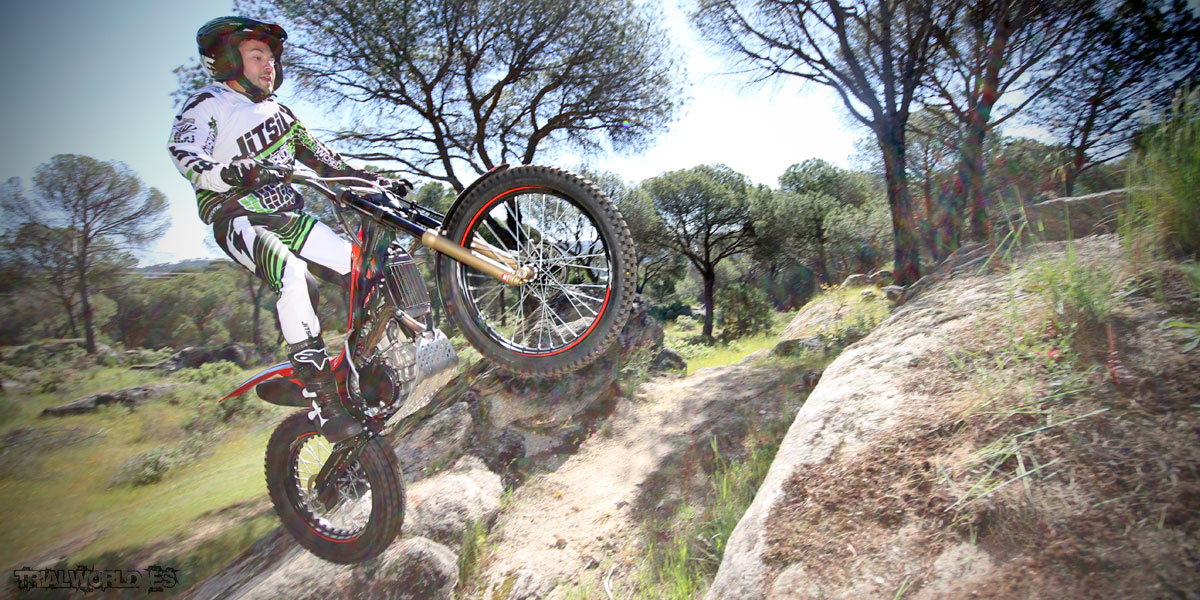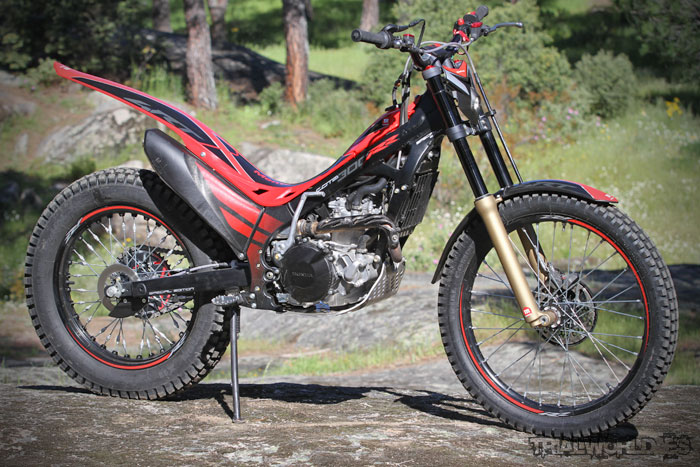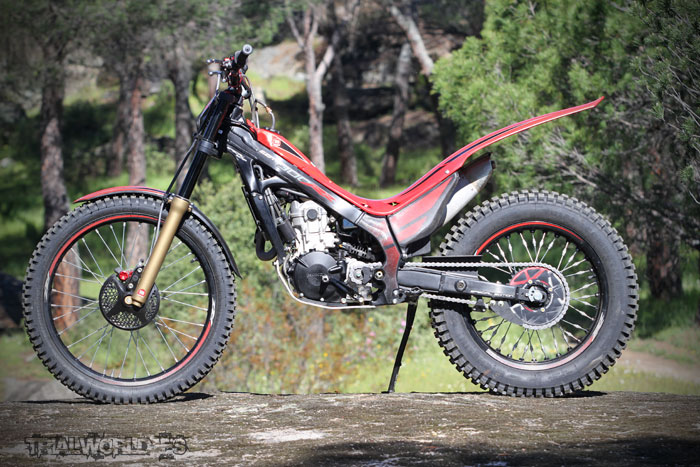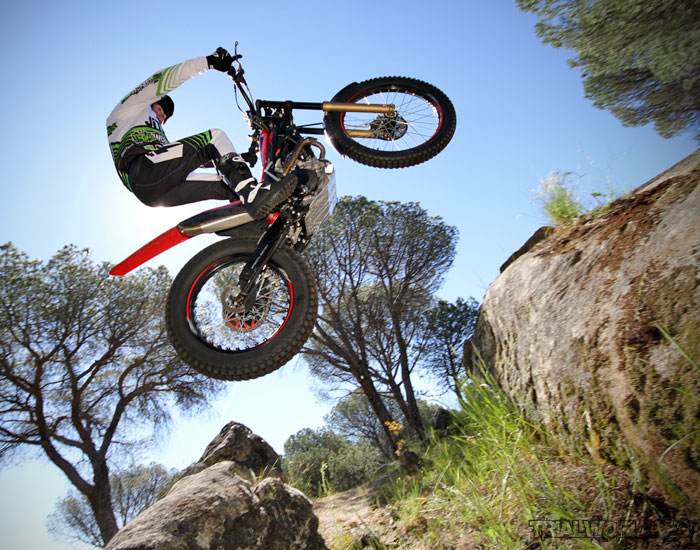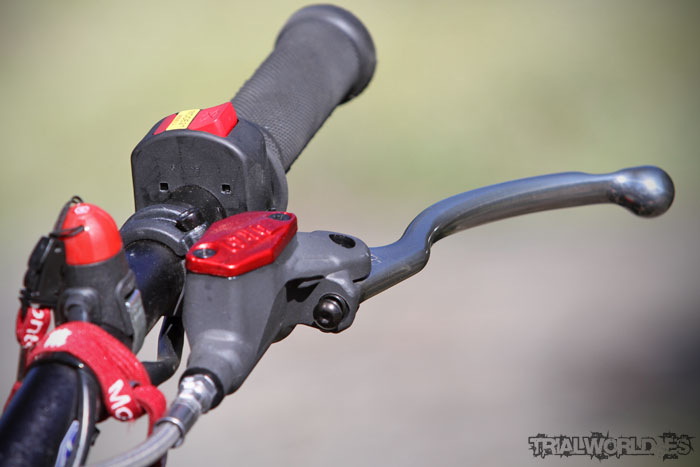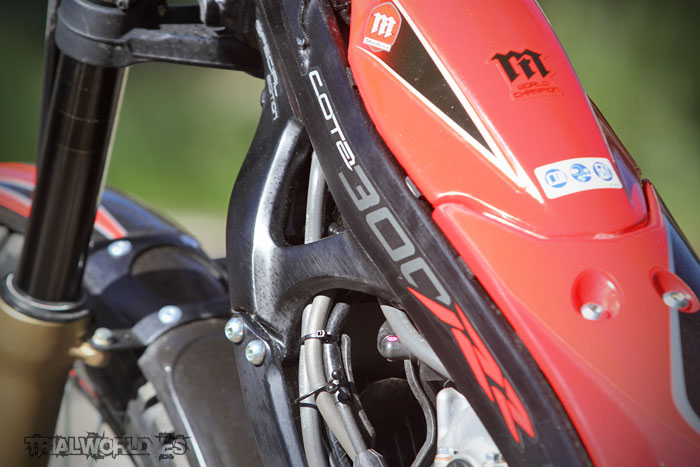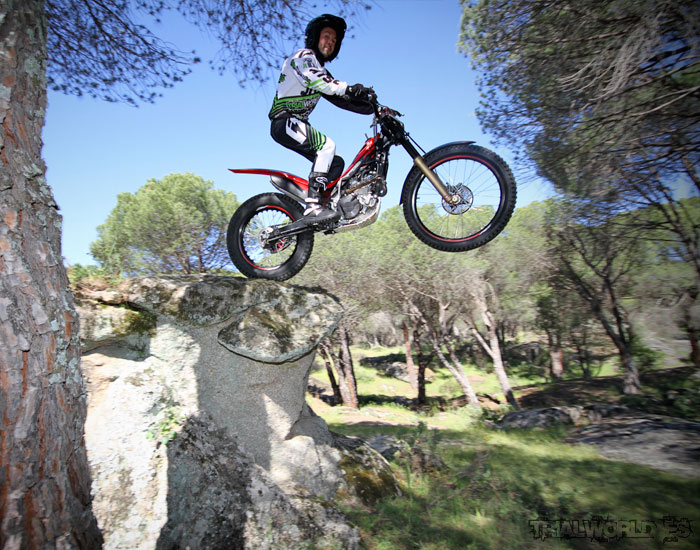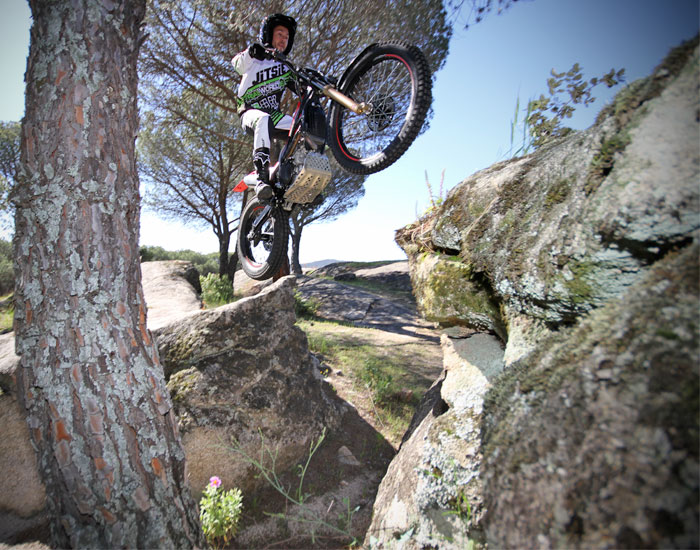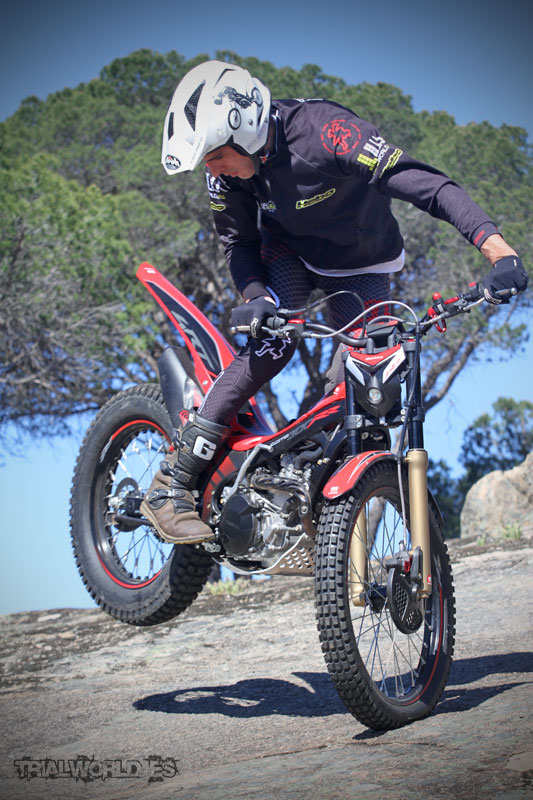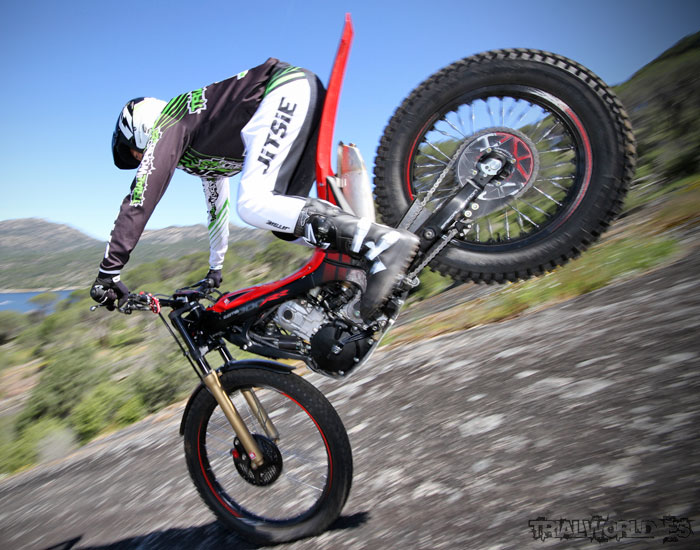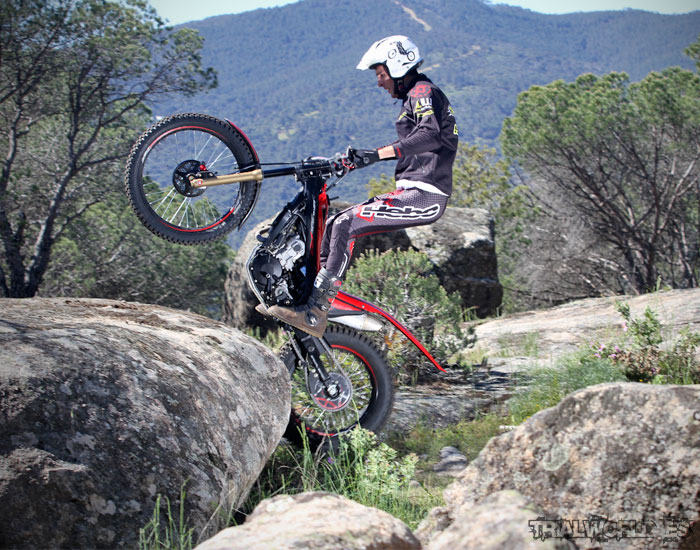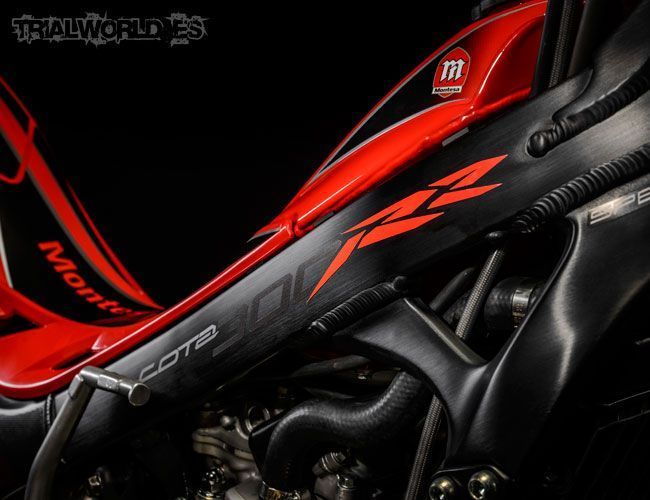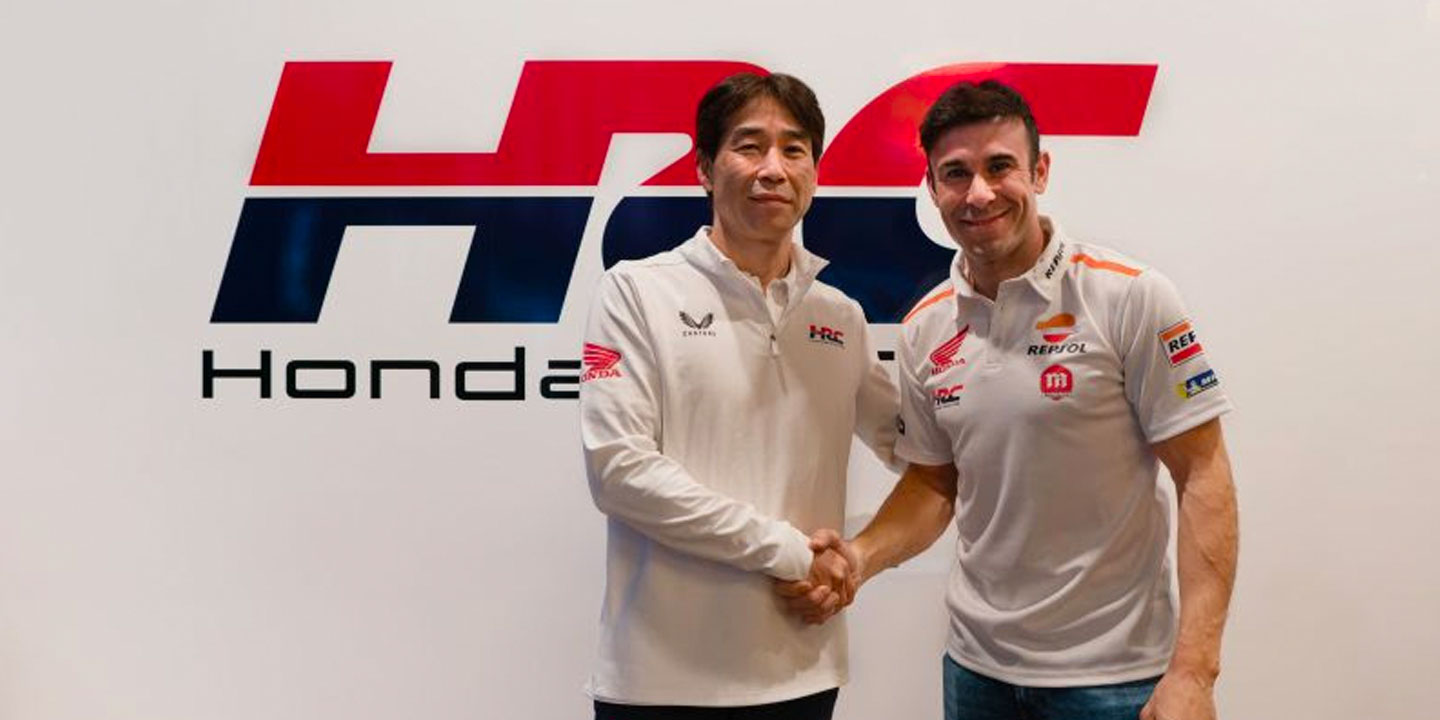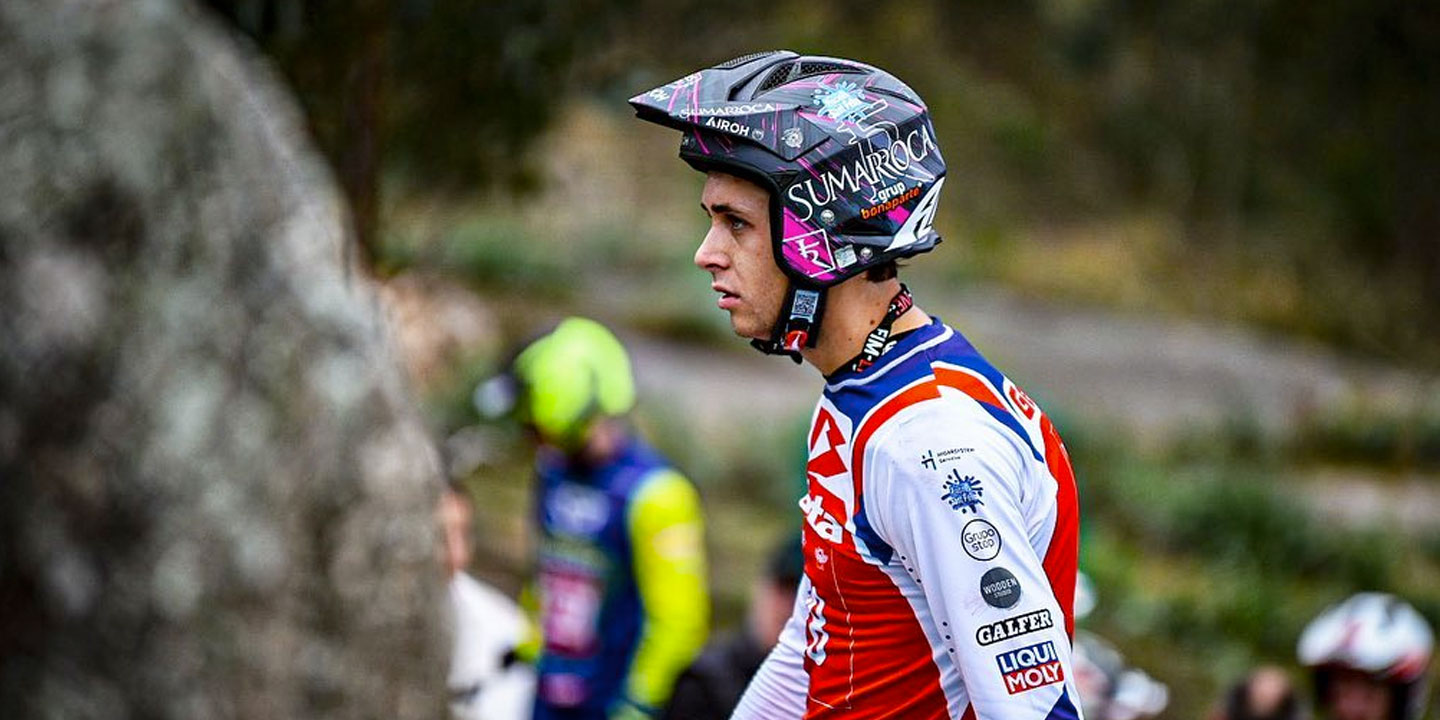Paradoxically, the impressive sporting record that Montesa has accumulated with the Cota 4RT contrasts with the type of audience that demands it in dealerships. The new Cota 300RR, lighter and more powerful than its siblings, seeks to seduce a more demanding public and stand up to the fresh wave of 2-stroke models with strong arguments. This is Montesa’s new work.
I remember perfectly the launch of the first Montesa Cota 4RT In 2005, the year Honda abandoned a newly crowned world champion bike, the Montesa Cota 315R, to take on one of the most important challenges in the history of the Cota saga: to focus fully on four-stroke engines.
In 2007 the prodigious arrival of
Toni Bou
, the best rider of all time, has managed to make the Montesa Cota 4RT world champion on 17 consecutive occasions, on any type of terrain and regulation, demonstrating a perfect symbiosis with his 4-stroke bike against a legion of opponents equipped with mix engines.
WHY THE MONTESA COTA 300RR?
It is curious that for more than a decade Montesa’s overwhelming dominance in competition had its mirror in the dealerships with a bike mainly demanded by amateurs of the most basic level and deservedly blessed for its extraordinary reliability and quality.
Why this positioning? Mainly because of its disadvantage compared to 2-stroke
trial bikes
in three main sections: weight, power and price.
The Cota 4RT remained almost unchanged for nine years, forcing the brand’s devotees to turn to the auxiliary industry to get displacement increases, smaller tanks, new maps on the ECU (in the case of programmable ones), reduction of engine braking or more open exhausts signed by Mitani or Termignoni.
In 2014 Montesa woke up with the launch of two new versions: the more economical Cota 4RT 260 (Tech – R16V suspensions), and
the Cota 4RT
Race Replica (Showa), both with more displacement, less engine braking and other mechanical improvements.
Montesa Honda’s good work brought the Cota 4RT back into the spotlight and paved the way for the launch of the Cota 300RR, our protagonist, in mid-2015.
A WIDER AUDIENCE
The presentation of the
Montesa Cota 300RR
symbolises the maximum exponent of the brand and completes the trial range together with the two Cota 4RT models mentioned above.
The acronym RR (Race Ready) already anticipates the intentions of this new model, which has been worked entirely to achieve greater power and also reduce the weight of the set. Always with the premise of maintaining the values of technology, reliability and quality that distinguish the brand.
With this new model, created under the experience acquired in competition, Montesa finally has a product on the market consistent with its role as world champion and seeks to seduce a wider and more diverse audience, although mostly young and a priori with a higher level of riding. A positioning that, without a doubt, allows it to fight with great arguments in the market against the non-combustible 2T.
WHAT’S NEW AT THIS 300RR ELEVATION?
As we pointed out earlier, the work of the engineers is concentrated on two main fronts, that of increasing power and reducing weight.
The thermodynamic unit has a new engine that stands out for a notable increase in displacement (288 cc.), based on increasing the bore (from 78 to 80 mm.) and also the piston stroke (increasing by 3mm.), a change of dimensions that has required the redesign of the engine, which now uses a new crankshaft assembly. connecting rod and piston. All this, added to the new fuel pump with a higher flow rate, seeks an increase in torque and power, especially in the mid-rev range. In addition, the effect of engine braking has been reduced by means of a crankcase gas decompression system and the help of electronics.
The ECU has also been modified with the addition of new mapping. And by the way, the selectable dual-map ECU is only available as standard in the full-power (non-registrable) version.
On the other hand, the model benefits from a saving of 2 kg compared to the Cota 4RT thanks, mainly, to the incorporation of a new suspension team where the Tech fork with aluminum bars and modified Showa rear suspension stands out.
AT THE CONTROLS OF THE 300RR ELEVATION
The new Cota 300RR is a motorcycle that you will fall in love with at first sight. The successful chromatic and line of the ensemble inspires elegance, competition, exclusivity and quality.
There are no surprises in the start-up. Smooth and continuous kick. No gas. The valves come to life and you can see the first glimpses of their sporty nature.
However, the first thing that strikes us is the riding position. It is enough to travel a few meters to realize that the new 300RR feels noticeably lighter in the front end than its “260” sisters, and in addition to the lower weight of the Tech fork we have a repositioning of the footpegs, now lower and rear, which accentuates even more that feeling of lightness.
In the first meters of interzone we already reveal more details of its character. The engine has gained in elasticity and the ability to over-rev and stretch in each of the speeds is surprising, to which we must add a great torque that favors a comfortable ride in long ratios. In other words, the new Cota 300RR also maintains that road and adventurous essence that so many owners have rewarded from the 4RT saga. Now, in addition to the well-known poise and traction, lightness and agility are added as a virtue.
THEIR HABITAT
We arrived at the zones, the perfect habitat to understand Honda’s new work. More than a dozen fans of different levels have participated in this test, some even current owners of the Cota 4RT.
The first thing we must point out is that the Montesa Cota 300RR maintains the character and hallmarks of the brand, so it will not disappoint all those lovers of the brand who are looking for greater performance and a more contained weight.
Montesa announces two kilos less than the Cota 260, a not insignificant figure that is truly felt, although its 72 kilos of curb weight is still about 5 kilos above the average of its 2-stroke namesakes, and that is also noticeable.
Indeed, Montesa has designed a motorcycle with a sportier spirit. The engine has more punch from low revs and it is in the mid-rev range where the work of the engineers is most appreciated. This is a more elastic and powerful engine with a truly surprising stretch. This unit also had the double-mapped device to select one of the two pre-established power curves, one more aggressive and the other designed for terrain with less grip. And you really notice the difference in character when selecting between one map and another.
We liked the clutch less. In addition to the fact that it shook slightly in the first third of the course, the feeling that testers have shared is that it is perhaps a little slow to respond. The test session coincided with the new
TRS One
and the same obstacles cost us more effort with the Montesa Cota 300RR, especially where there was less space to start.
The “Cotas 4T” are motorcycles that are best driven taking advantage of inertia, anticipating the obstacle, in a fluid way, and not so much looking for the immediacy that characterizes a 2T. When you understand this character, riding is much more effective and fun.
COMING FULL CIRCLE
The qualitative leap could not be completed without in-depth work on the suspensions. We have always praised the excellent performance of the Showa team of the
Montesa Cota 260 Race Replica
(the standard model rides Tech + R16V), but there was a lot of room for improvement, especially in terms of weight, to satisfy the demanding public that is potential buyers of this bike.
We loved the Tech fork and it has all the virtues we can ask for for any level of riding. The feeling of lightness in the front end is noticeable compared to its sisters, without renouncing the values of poise and stability that have always distinguished the chassis of the “Cotas 4T”.
At the rear, it receives a new Showa shock absorber of excellent quality and behaviour, although testers agree that it should help the rider more in obstacles and perhaps errs on the side of slowness in bouncing. However, this criterion is more in line with the rider’s taste and
trial technique
, as the shock absorber is adjustable and the settings can be adjusted.
IN 10 LINES
It is always a pleasure to get behind the controls of a Montesa and check the scrupulous quality with which they are conceived. The Montesa Cota 300RR is the maximum exponent of this excellence and has not spared an inch in building a bike with the capacity to seduce the most demanding rider, regardless of their level, betting on showing itself as a valid alternative as standard for those who do higher level areas.
More power, especially in mediums, an infinite engine very comfortable to drive and really fun with a clutch that we think can be improved.
Lighter, basically in the front axle, thanks to its new fork and the repositioning of the footrests.
More exclusivity in all aspects, from the level of the components (carbon protections, Renthal, Braktec Power Parts, S3 Hard Rock footpegs) to the price, which marks a new all-time high in the market: €8,999
In short, a great job that comes to complete with a third model the Cota de Trial range, each with a well-defined positioning but sharing essence.
Even better, the bike that has won the most world titles finally has a mirror to match it in the dealerships.
MONTESA TRIAL RANGE PRICE
Montesa Cota 4RT260 2018 Price: 6,325 euros
Montesa Race Replica 2018 price: 7,649 euros
Montesa 4Ride 2018 price: 7,295 euros
Montesa Cota 300RR Price: 8,999 euros
SPARE PARTS MONTESA COTA 4RT and COTA 300RR
Accessories, spare parts and protections for Montesa
MONTESA TRIAL EQUIPMENT
Hebo Montesa Team T-Shirt
Hebo Montesa Team Helmet
Hebo Montesa Team Pants
Hebo Montesa Team Gloves
Hebo back and chest protector for Trial
TECHNICAL DATA SHEET MONTESA COTA 300RR
ENGINE
Type Mono Cylindrical, 4-stroke, 4-valve, SOHC, liquid-cooled
Displacement 288 cm3
Bore x stroke 80 × 57.2 mm
Compression ratio 10.5 : 1
Idle speed 1,800 min-1
Engine oil capacity: 0.6 liters; Transmission: 0.57 litres
FUEL SYSTEM
Electronic Fuel Injection PGM-FI
Butterfly diameter 28 mm
Viscous air filter, foam filter.
Fuel tank capacity 1.9 litres
ELECTRICAL SYSTEM
Electronic Digital Transistorized Ignition System
Ignition Advance 27° APMS (idle) ~ 45° APMS (10,000 min-1)
Spark Plug Type CR6EH-9 (NGK)
Pedal Start to Primary Transmission
ACG alternator power 160 W
DRIVETRAIN
Wet clutch, multi-plate with coil springs
Hydraulic Clutch Activation
Transmission Type: 5-speed
Primary Reduction 3,166 (57/18)
Gear ratios 1 to 2,800 (42/15)
2 to 2,384 (13/31)
3 to 2,000 (30/15)
4a 1,272 (28/22)
5a 0.814 (22/27)
Final Reduction 4,100 (41/10)
Final Drive Roller Chain #520
FRAME
Diamond Type Double Aluminum Beam
Dimensions (L×W×H) 2,016 × 830 × 1,130 mm
Wheelbase: 1,321 mm
Launch angle 23°
Feed 63 mm
Seat height 650 mm
Footrest height 385 mm
Ground clearance 335 mm
Dry weight 72.0 kg
SUSPENSION
Front TECH telescopic fork with 39 mm aluminium bars, adjustable in pre-load, compression and rebound. Travel 167mm
Rear Pro-Link system with SHOWA shock, adjustable in pre-load and rebound. Travel 170mm
WHEELS
Type: Aluminum rim / spokes
Front Wheel Size 21 × 1.60
Rear 18 × 2.15
Tire size Front 80/100 21 (Michelin)
Rear 120/100 R18 (Michelin)
Tyre pressure Front 39 – 44kPa
Rear 29 – 34kPa
BRAKES
Front: 185 × 3.5 mm hydraulic disc with 4-piston caliper and sintered metal pads
Rear: 150 × 2.5 mm hydraulic disc, twin-piston caliper and sintered metal pads
